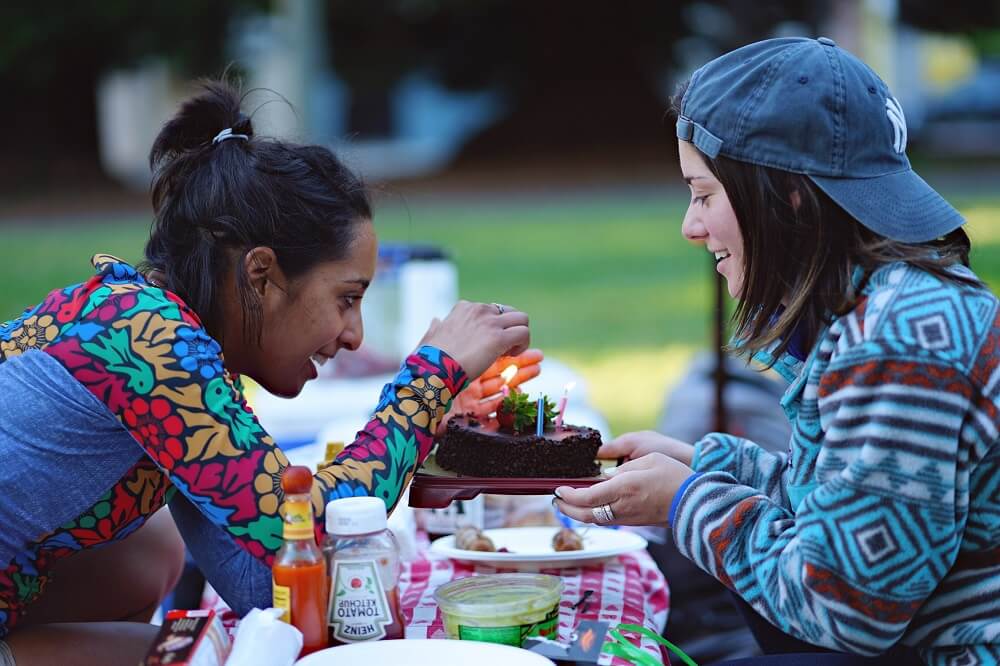
26 Jul Mindfulness Games For Teens and Young Adults To Live Mindfully
One of the best things about you taking up a meditation practice, is that you get to live by example. As every action is inspired by mindfulness, you will start to see that not only do you make your life easier, it changes the people around you too.
Some of these people, may be your children. The pressure of doing well at school or universities is alarmingly rising. Most students will override a serious injection of stress, anxiety and depression without being able to express it to someone they trust. That’s why a great way to ease their mind and body is to introduce them to meditation.
P.S: if you’re doing this activity with a group or for a class, be sure to keep it noncompetitive. It’s a safe zone, where no one is pushed to share, instead they are just there to become curious and discuss the different opinions that people have, it doesn’t matter who has the most answers.
This is how you can do that:
The Mindful Jar:
This activity can teach children about how strong emotions can take hold, and how to find peace when these strong emotions come up.
First, get a clear jar, like a Mason jar, and fill it almost all the way with water. Next, add a big spoonful of glitter glue or glue and dry glitter to the jar. Put the lid back on the jar and shake it to make the glitter swirl.
Finally, use the following script or take inspiration from it to form your own mini-lesson:
“Imagine that the glitter is like your thoughts when you’re stressed, mad or upset. See how they whirl around and make it really hard to see clearly? That’s why it’s so easy to make silly decisions when you’re upset – because you’re not thinking clearly. Don’t worry this is normal and it happens in all of us (yep, grownups too).
[Now put the jar down in front of them.]
Now watch what happens when you’re still for a couple of moments. Keep watching. See how the glitter starts to settle and the water clears? Your mind works the same way. When you’re calm for a little while, your thoughts start to settle and you start to see things much clearer” (Excite Media, 2017).
This exercise not only helps children learn about how their emotions can cloud their thoughts, it also facilitates the practice of mindfulness while focusing on the swirling glitter in the jar.
The Human Camera: This mindfulness activity is awesome in engaging the senses.
Have the children get into pairs. One child’s role is that of a camera; the other is a photographer.
The photographer walks behind her “camera,” with hands on her camera’s shoulders. She carefully guides her partner, who keeps his eyes closed. She will have the chance to make three photos.
She can guide her camera to just the right spot, either lifting his head up or down, to get the right angle. When she’s ready to take the picture, she gently squeezes her partner’s shoulders.
He can open his eyes momentarily, and his partner can “take the picture.” Then he must close them again right away.
After the third snapshot, have the partners switch.
Mindful or Mindless? Analyzing Characters in Books and Movies.
Every time we read a book or watch a film or TV show, we could take a moment to think about how the characters did or didn’t show mindfulness, gratitude, compassion, and so on.
So here are some questions to consider as you watch and read your favorite stories. (Teachers can use them as a worksheet and/or a springboard for class discussion.)
Present-Moment Awareness
- Is there a time when a character fully realizes and appreciates what’s happening in the present moment? What happens? Does it affect the rest of the story? How?
- Is there a time when a character is not aware of the present moment? What happens? Does it affect the rest of the story? How?
- If you were in this story, what (if anything) would you do differently? Why?
Mindful Speech
- Is there a time when a character says something true, helpful, and kind? What does he or she say? Does it affect the rest of the story? How?
- Is there a time when a character says something untrue, unhelpful, and/or unkind? What does he or she say? Does it affect the rest of the story? How?
- If you were in this story, what (if anything) would you do differently? Why?
Compassion
- Is there a time when a character shows compassion toward another person or animal? What does he or she do? Does it affect the rest of the story? How?
- Is there a time when a character does not show compassion toward another person or animal? What does he or she do? Does it affect the rest of the story? How?
- If you were in this story, what (if anything) would you do differently? Why?
Here’s an example of what this might look like for adolescents or adults: it’s from one of my favorite French films, Paris, starring Juliette Binoche and Romain Duris (contains spoilers):
Appreciating the Present Moment
Pierre is on his way to the hospital for an operation that may or may not save his life. He gazes longingly out the taxi window at the city and at the people strolling by.
While this doesn’t change the plot of the movie, it’s an important moment because it makes the audience realize the things other characters (and we ourselves) are taking for granted.
Mindful Speech
Pierre’s sister Elise tells her colleagues she’ll be reducing her hours because she needs “more time for myself.” She doesn’t explain that it’s because she has to take care of her seriously-ill brother, and responds coldly to their complaints that they’re already overworked and also need time for themselves.
What she says is true, but she says it in a way that’s unhelpful. Her colleagues respond in an unkind way, assuming that she’s being selfish.
If I were Elise, I’d explain that I had a family emergency, and I’d apologize for burdening them with extra work. If I were one of her colleagues, I’d talk to her quietly after the meeting to find out why she suddenly needed to reduce her work hours.
Compassion
When she stops at a street market to buy food for dinner, Elise watches one of the vendors offer
to make a free delivery for an elderly woman who’s having trouble carrying her purchases.
This small compassionate action has a big impact on the story: Social worker Elise teases the vendor about being in the same line of work; this begins a flirtation that leads to a romantic relationship.
This article has been inspired by this website and references have been taken from: http://www.mindfulteachers.org/2015/12/mindful-or-mindless-characters.html.




No Comments